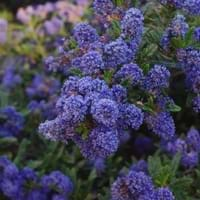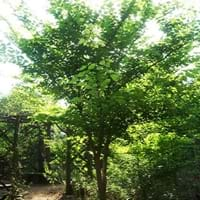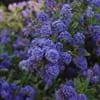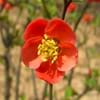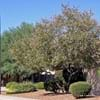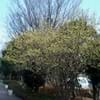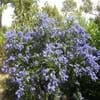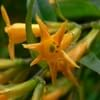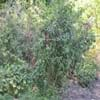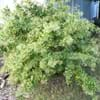What is
Life Span
Perennial
Perennial
Type
Shrub
Tree
Origin
Hybrid origin, Northwestern United States, California, Canada
North America, Northeastern United States, Mid-Atlantic United States, North-Central United States, Central United States, South-Central United States, Canada
Types
New Jersey tea,Maritime ceanothus,Ceanothus connivens
Not Available
Habitat
Rocky Mountains, Scrubs
Woodland Garden Canopy
USDA Hardiness Zone
5-8
3-11
AHS Heat Zone
8-6
10-1
Sunset Zone
4, 5, 6, 7, 8, 9, 14, 15, 16, 17, 18, 19, 20, 21, 22, 23, 24
Not Available
Habit
Oval or Rounded
Upright/Erect
Information
Plant Size
Minimum Height
120.00 cm
99+
1,830.00 cm
22
Minimum Width
120.00 cm
99+
Not Available
Plant Color
Flower Color
White
Tan, Sandy Brown
Flower Color Modifier
Not Available
Bicolor
Fruit Color
Not Available
Green, Sandy Brown
Leaf Color in Spring
Lemon yellow
Green
Leaf Color in Summer
Green
Green, Dark Green
Leaf Color in Fall
Red, Bronze
Yellow, Green
Leaf Color in Winter
Not Available
Not Available
Shape
Leaf Shape
Club - shaped
oblong or obovate
Thorns
Yes
No
Season
Plant Season
Spring, Summer, Fall
Not Available
Growing Conditions
Sunlight
Partial Sun, Partial shade
Full Sun, Partial Sun, Partial shade
Growth Rate
Medium
Medium
Type of Soil
Clay, Loam, Sand
Clay, Loam, Sand
The pH of Soil
Acidic, Neutral
Neutral, Alkaline
Soil Drainage
Average
Average
Bloom Time
Early Spring
Early Spring, Spring
Repeat Bloomer
No
No
Tolerances
Not Available
Not Available
Care
Where to Plant?
Ground, Pot
Ground
How to Plant?
Rooted stem cutting, Seedlings
Seedlings
Plant Maintenance
Medium
Medium
Watering Plants
Watering Requirements
Do Not over Water
Average Water Needs
In Summer
Lots of watering
Lots of watering
In Spring
Moderate
Moderate
In Winter
Average Water
Average Water
Soil
Soil pH
Acidic, Neutral
Neutral, Alkaline
Soil Type
Clay, Loam, Sand
Clay, Loam, Sand
Soil Drainage Capacity
Average
Average
Sun Exposure
Partial Sun, Partial shade
Full Sun, Partial Sun, Partial shade
Pruning
Remove damaged leaves, Remove dead branches, Remove dead leaves
Remove damaged leaves, Remove dead branches, Remove dead leaves
Fertilizers
All-Purpose Liquid Fertilizer
Any balanced general purpose fertilizer
Pests and Diseases
Not Available, Red blotch
Blackspot mold
Plant Tolerance
Drought
Drought
Facts
Flowers
Showy
Insignificant
Flower Petal Number
Single
Not Available
Fruits
Showy Fruit
Yes
No
Edible Fruit
Yes
No
Fragrance
Fragrant Flower
Yes
No
Fragrant Fruit
No
No
Fragrant Leaf
No
No
Fragrant Bark/Stem
No
No
Showy Foliage
No
Insignificant
Showy Bark
No
No
Foliage Texture
Medium
Medium
Foliage Sheen
Matte
Matte
Evergreen
No
No
Invasive
No
No
Self-Sowing
No
Yes
Attracts
Birds
Beetles, Birds
Allergy
Not Available
Miscarriage, Rash
Benefits
Uses
Aesthetic Uses
Formal Garden
Not Used For Aesthetic Purpose
Beauty Benefits
Not Available
Beautiful Skin, Heals Damaged Hair, Strong, beautiful hair
Edible Uses
Yes
Yes
Environmental Uses
Air purification
Air purification
Plant Benefits
Medicinal Uses
Not Available
Demulcent, Diuretic, Expectorant, Nutritive
Part of Plant Used
Leaves
Fruits, Inner Bark, Leaves
Other Uses
Basketary
Chewed as a thirst quencher, Tea-like beverage can be brewed, Used as a thickener in soups, Used to make a twine
Used As Indoor Plant
No
No
Used As Outdoor Plant
Yes
Yes
Garden Design
Feature Plant, Foundation, Hedges, Mixed Border
Shade Trees
Scientific Name
Botanical Name
CEANOTHUS 'Concha'
ULMUS rubra
Common Name
Wild lilac
Slippery Elm
In Hindi
Wild Lilac
Slippery Elm
In German
Säckelblumen
Rotulme
In French
Wild Lilac
Slippery Elm
In Spanish
Ceanothus
olmo resbaladizo
In Greek
Wild Lilac
Slippery Elm
In Portuguese
Ceanothus
Slippery Elm
In Polish
Wild Lilac
Slippery Elm
In Latin
Wild Lilac
Lubricus Elm
Classification
Kingdom
Plantae
Plantae
Phylum
Tracheophyta
Magnoliophyta
Class
Magnoliopsida
Magnoliopsida
Order
Rosales
Urticales
Family
Rhamnaceae
Ulmaceae
Genus
Ceanothus
Ulmus
Clade
Angiosperms, Eudicots, Rosids
Angiosperms, Eudicots, Rosids
Tribe
Not Available
Not Available
Subfamily
Not Available
Not Available
Number of Species
50
99+
Not Available
|
||
|
||
|
